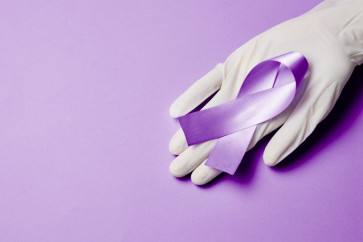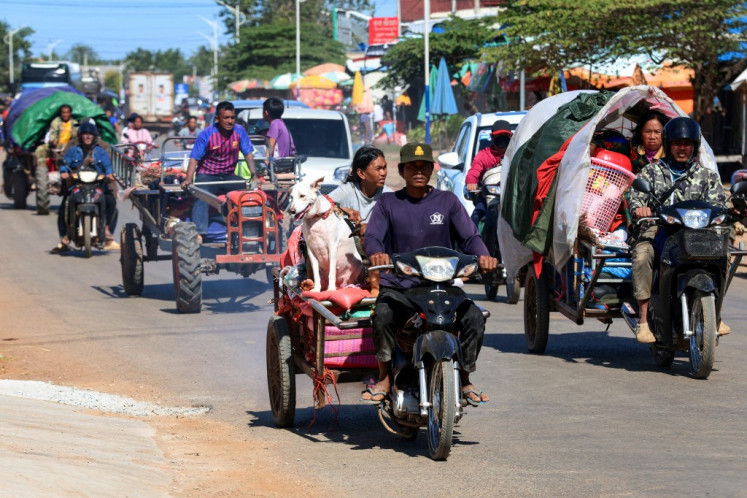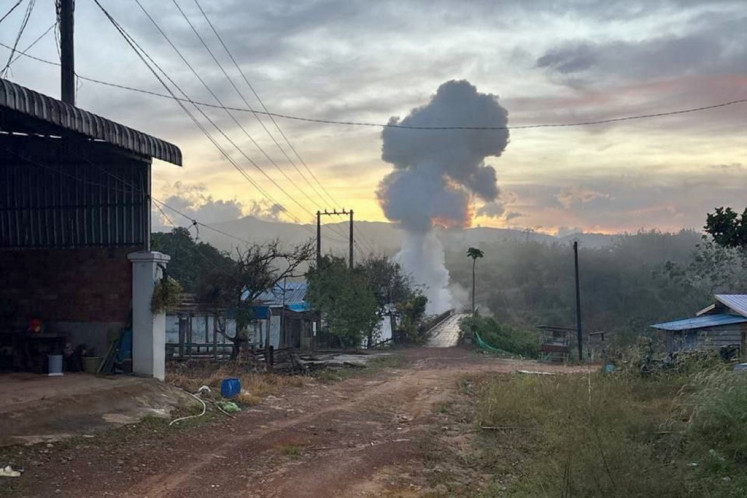Popular Reads
Top Results
Can't find what you're looking for?
View all search resultsPopular Reads
Top Results
Can't find what you're looking for?
View all search resultsReflexology: Getting it right
A man undergoes reflexology treatment at a Jakarta shopping mall
Change text size
Gift Premium Articles
to Anyone
A man undergoes reflexology treatment at a Jakarta shopping mall. Reflexology centers are easily found across the city but some people tend to confuse reflexology with foot massage. (JP)
The word reflexology conjures up images of dimly lit rooms, aromatic oils, the soothing sound of water rippling off in a corner, and the much awaited healing touch and gentle pressure of the therapist fingers on toes, sides, ankles and soles of the feet.
People's experiences vary not just from one reflexology center to another, but from one therapist to another within the same center or branch.
Vina, a 30-year-old housewife who regularly goes for reflexology every Sunday with her husband, had a good experience a week ago.
The therapist, she said, was systematic and the treatment was very relaxing.
"But today, I had a different therapist.... She jabbed my feet so hard I got cramps," Vina said.
After a while, she told the therapist to just stop, but she still had to pay. "Why can't all the therapists be trained the same?" she asked.
Other people might raise a similar question -- why can't all reflexology therapists practice same standard?
From the start of the treatment, water levels and temperatures vary with every therapist, as well as the way the towels are wrapped, and the reflex points each therapist presses and kneads.
So what is the standard practice?
"Apart from the reclining black leather or wooden chairs, nothing is the same," said Benny, Vina's husband.
Sometimes, he said, he got black and blue marks just under his knees after the treatment. "I'm thinking of quitting reflexology. Good old massage is better for me," he said.
Another woman, Kumari, has been faithful to reflexology for the last six years and she recommended a center in the Ambassador shopping mall in South Jakarta.
"I can say eight out of 10 treatments I've had there are good. The bad ones are everywhere, you just have to be ready to ask for a different therapist if the first five or 10 minutes is bad," she said.
Reflexology centers are easily found in Jakarta's shopping malls, many of the upscale serviced apartments, and even in some office towers which double as residential suites.
But few will comment on the absence of reflexology clinics within local hospitals, despite the huge demand and popularity of reflexology in Jakarta and beyond.
In practice, some people tend to confuse reflexology with foot massage.
A Public Relations manager at a South Jakarta hospital sounded alarmed when asked about the lack of a reflexology clinic within the hospital.
"We have an acupuncture clinic. Reflexology is usually found in a spa or massage parlor," she said.
Little did she know in many European countries, reflexology is a clinical practice.
Western reflexology originated with Eunice Ingham, a nurse and physiotherapist who in 1938 undertook the massive task of mapping reflex zones of the foot and their corresponding network of internal organs.
Ever since then, reflexology has been taught as a professional course in Europe and North America, and practitioners need to first graduate in reflexology before they can be certified as a practitioner. In Russia, the standards are even stricter and medically streamlined: Only licensed physicians can perform reflexology.
The stringent measures and qualifications imposed as prerequisites to perform reflexology in the West are based on the recognition of potential risks if a treatment is done wrongly.
According to one doctor in Jakarta, who asked not to be identified, pressure applied inaccurately or on the wrong reflex points can cause health complications: Blood flow could get constricted rather than be re-energized.
"If poked, pushed or pulled too hard, there's a chance of internal injury. People don't realize the dangers and just take it as another form of massage. It is anything but. Reflexology is a part of complementary and alternative medicine," the doctor said.
But reflexology has been commercialized, with people starting a business by hiring staff not from any reflexology academy but internally trained by a supposedly experienced trainer.
Reflexology, in fact, relies on extensive knowledge of nerve endings in the feet and reflex zones.
Reflexology -- as its name implies -- is the science of human reflexes and calls for physiological knowledge of how to manipulate and stimulate these human reflexes for healing purposes.
Dr. Ajay, an Indian general practitioner and ayurvedic physician, said recently, reflexology served best as a preventive therapy. It has been found effective in treating back pain, headaches, diabetes and hypertension.
"It's not so much a 100 percent curative procedure. It works best as a complementary therapy coupled with expert medical treatment," he said.
Citing an example, he said Vishnu Charan, known to Indians for many centuries, is always practiced by ayurvedic physicians and therapists trained in anatomical sciences along with naturopathic treatments and herbal medication to solve health problems.
The above points on scientific accuracy of pressure points, training requisites of anatomical knowledge, timing and frequency of reflexology sessions as emphasized by Western and other Asian practitioners of reflexology are in stark contrast to the usual practice in Jakarta.
Unless it is systematically practiced, reflexology might pose a danger rather than facilitating health benefits.
Facts
What is reflexology?
Reflexology is a systematic set of techniques by which pressure is applied to certain points where nerves end in the body, or reflex zones, most located in the feet and hands. The system assumes a reflex network located on the feet is connected to various internal organs throughout the body.
Where and when did reflexology originate?
Archaeological evidence points to Egypt around 2330 BCE; China, 2704 BCE; and Japan 690 CE. Clinical reflexology in the West began with the American physiotherapist and nurse, Eunice Ingham, who mapped the reflex zones into an empirically validated chart in 1938.
What are the various methods or kinds of contemporary reflexology?
* The traditional method involves a reflexologist applying pressure with thumbs and fingers at various points on the feet, known as reflex zones.
* Modern practices include the use of tools which vary from a simple wooden hand-held knob to more complex plastic and metal devices.
* Reflexology has been extended to address complaints in specific areas of the body. The applying of pressure aligns with the meridians or acupuncture points of the body. Pressure is applied to these points either by hand or by low-voltage massage equipment.
* Macroreflexology includes foot and hand treatment combined as well as acupressure or acupuncture treatment for a specific complaint.
* Chakra reflexology is based on the ayurvedic concept of seven vital zones in the human body and a reflex network with specific Marma points to which pressure can be applied to bring about holistic healing and tranquility.
What are the benefits and hazards of reflexology?
If reflexology is performed accurately by applying gentle pressure, it is widely acknowledged to be therapeutic, relaxing and good for blood circulation.
Inaccurate pressure on reflex zones, overly strong pressure or poking the sole with sharp objects and direct push or pressure applied on the spine, knees or forehead can lead to adverse effects such as swollen veins, constricted blood flow, tense muscles, muscle cramps, tender and bruised skin, headaches and backache.










